Field Test: PenCott Metropolis – an update
Introduction
It has been several years since I last wrote about PenCott Metropolis. In my initial field test, I introduced the prototypes of said pattern, which were displayed during IWA 2017. Since then a lot has happened with it.
While PenCott Wildwood gained more interest, as it is an exclusive licensed pattern to Helikon-Tex and Direct Action, PenCott Metropolis was somehow pushed in the background and did not get as much attention from companies, while the various social media sites always went crazy when some Metropolis content was published.
Some things are beyond my comprehension and I always wondered why the usual suspects of companies never really committed to Metropolis – maybe because it is an urban pattern and those are usually too specific to attract enough customers.
Be it as it may, PenCott Metropolis was finally available in 2019, and some companies like UR Tactical immediately offered it.
It took me until 2020 to compile a full set and the pictures you will find here, are actually that old. So why the sudden follow up on a pattern that I already wrote about in 2018?
Two reasons:
- The production version features stronger tan/brown colors than the prototypes.
- Perunika.org is doing what most companies were afraid off: they are commiting to PenCott Metropolis and are taking preorders.
Previous field tests about urban patterns stressed several important aspects, when it comes to urban camouflage:
- diverse and fast changing environments
- solid color vs camouflage
- low light vs “normal” light approaches
- the simple fact that urban environments differ from country to country
- camouflage vs “intimitation”
With that in mind, I want to take a closer look at the production variant of PenCott Metropolis, how it performs in an urban environment as well as in an alpine situation.
PenCott Metropolis – an Update
Initially PenCott Metropolis was designed to blend in with built-up, urban environments, under various light conditions – mainly low light. NATO and US Military research was also incorporated in the choice of colors – which also changed the final look of the pattern. While the early prototypes of 2017/18 were more (dark) gray dominant, the final production version of Metropolis features a much stronger Coyote brown in the pattern elements. This changed the overall look and feel of the pattern and contributed to its versatility as we will see later on.
The geometry of Metropolis is the same as all the others from the PenCott family. Using the 3-in-1/360° concept, micro, midi and macro fractal elements provide camouflage at short, mid and long distances. In doing so, the PenCott family of camouflage works by both blending and disrupting, using natural tones found in the environments they are designed for.
Looking at the production version of PenCott Metropolis, the colors resemble typical urban environments, ranging from ivory to light grey, tan/coyote to dark brown grey.
Because of its colors, PenCott Metropolis also works for rocky/mountainous environments, even though it was not designed primarily for that specific use. However, as I looked at this aspect in previous field tests, I will do so here as well.
So let’s go over the usual methodic caveats, before looking at the actual field test.
Methodic Remarks
As always I want to point out several important aspects beforehand. First of all, I do not claim any scientific standard with my camouflage comparisons. Also, I conduct them with my best knowledge and the available resources.
The pictures are usually taken at the same locations I always use to make my camouflage comparisons. That way you can compare the various field tests I have done so far with each other.
Before I start, please consider the following – as always:
I did not edit the pictures in any special way, except the following:
- Lens correction
- Watermark
- Blurred my face out if necessary
- .jpeg compression to make it web compliant
- I always do a proper white balance to make colors appear the way they are.
A short explanation to the environment and the procedure:
The pattern was tested in a Central European urban environment (urban environments differ from country to country, region or continent). Information about the various locations will be stated in the subsections. The pictures portray three different positions:
- Standing in the open (to get an idea of the pattern in this particular surroundings and if the colors match it)
- Kneeling
- The prone position (to mimic basic, up to ideal concealment without using enhancements)
As always I photographed the pattern with a wide angle lens at first and then with 35mm focal length, which mimics the actual picture the human eye would perceive at this distance. Having in mind the three different positions mentioned before, I usually end up with 6 pictures of each location.
Furthermore:
Just like in previous articles, I will continue my modus operandi and not describe or comment on each picture. Instead I will give a more thorough analysis at the end of each location subsection.
With that being said, let’s take a closer look at the pictures themselves.
PenCott Metropolis
Location 1
Just like in the previous urban field test, location 1 is an abandoned sawmill which is partly overgrown with vegetation. You can find everything from tarmac areas, to concrete walls, stone walls or white painted walls. That plus the occasional rusted iron debris.
The distance to the camera is roughly 10m. The weather was cloudy with soft light – so shadows were no issue at this point.

Wide angle lens – Standing position – 10m distance 
Wide angle lens – kneeling position – 10m distance 
Wide angle lens – prone position – 10m distance 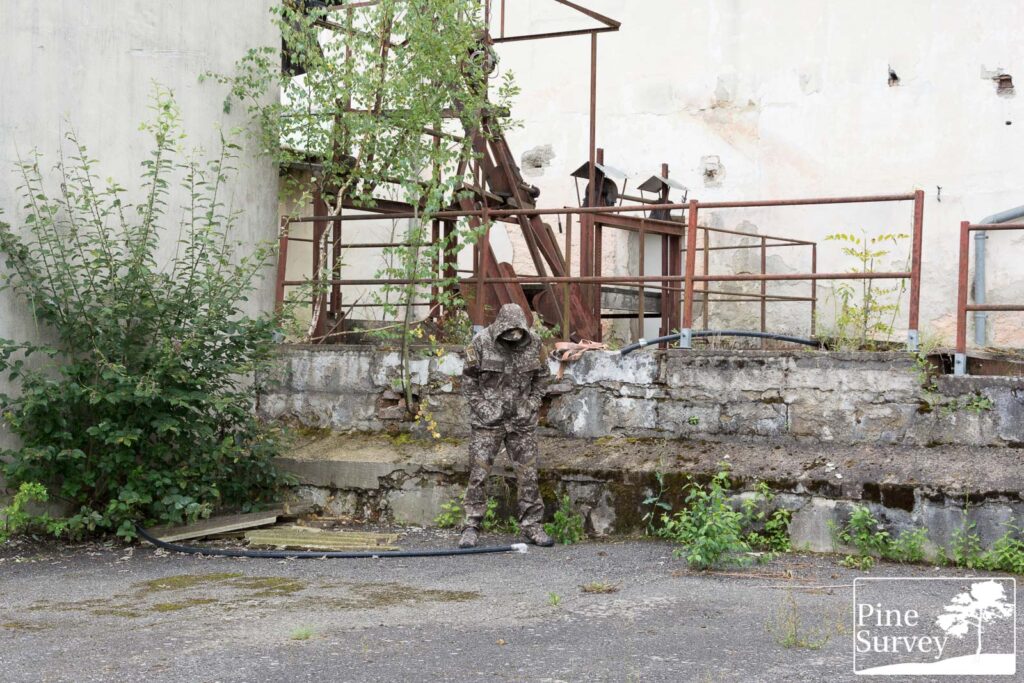
35mm focal length – Standing position – 10m distance 
35mm focal length – kneeling position – 10m distance 
35mm focal length – prone position – 10m distance
Observations – Location 1
Going through the three positions, I will start with the wide angle lens as always. As most of my readers will know, the standing position is usually the one, which gives away most of the silhouette. Because of the choice of colors, as well as the midi and macro elements, an effective blending as well as disrupting effect is achieved. The gray, brown as well as ivory colors match the industrial or urban setting very well, blending into it almost seamlessly.
The kneeling position makes the silhouette almost disappear against this backdrop, as the brighter elements on one leg and the darker fractals on the other disrupt the body, while the torso blends into the wall behind the person. When looking at these kneeling pictures, the disrupting effect of the macro elements becomes more apparent as the light hits the Metropolis pattern differently.
Light is key as one can see in the prone position – it also shows the versatility of the colors of PenCott Metropolis as it appears to be brighter, when being exposed to stronger light. Lying on the floor without cover is a bit more revealing, at the same time one can see how the organic fractal elements of Metropolis make it fit into this setting without looking “off”. While one can see that something is there, it is not so easy to identify what it is (rocks, garbage, debris).
The pictures in 35mm focal length give a better idea of the macro elements, as well as the organic structure. Because of the contrast in colors as well as the algorithm in which the colors are distributed among the various pattern elements, the organic feel of PenCott is more visible than in Badlands for example. As such, the disruptive effect is more evident as one can see the ivory and light grey elements interacting with the larger tan/brown and brown gray fractals.
When kneeling down, my statements from above become more apparent as the interaction of the elements on the legs is more visible. But also the torso as well as the shoulder show how the colors of PenCott Metropolis blend into the background.
The same can be said about the prone position again.
A note on the white wall on the left. Of course PenCott Metropolis would stand out against such a background – as would any other camouflage pattern and solid color. The only way to work against detection in front of this background would be wearing exactly the same color as the paint – which in turn would stand out strongly against the backdrop where the PenCott Metropolis pictures were taken. This underlines the issues of urban camouflage as well as proper situational awareness of where to take cover, when on mission.
Location 2
This second location is in the same compound, but at a different spot where material was stored. The floor is made of tarmac, while the wall in the background is concrete. Nature has found its way back here as well and together with the debris in the back, as well as various other remnants, you will find a diverse setting.
The distance is between 5-10m and the weather conditions are the same, since I did the pictures the same day: cloudy with soft light, no shadows.
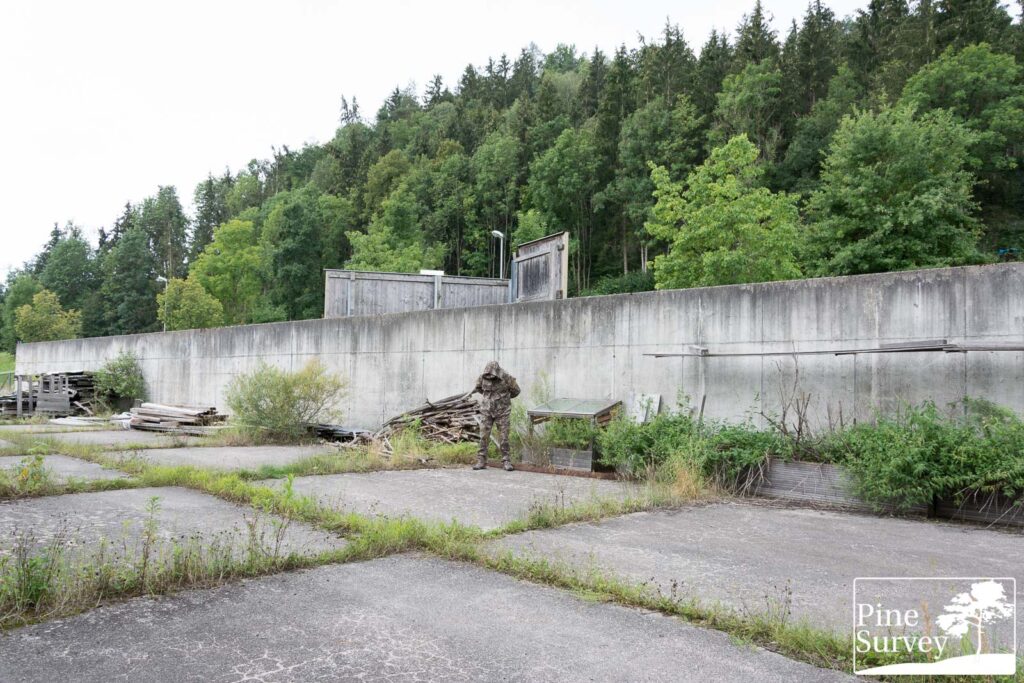
Wide angle lens – Standing position – 5-10m distance 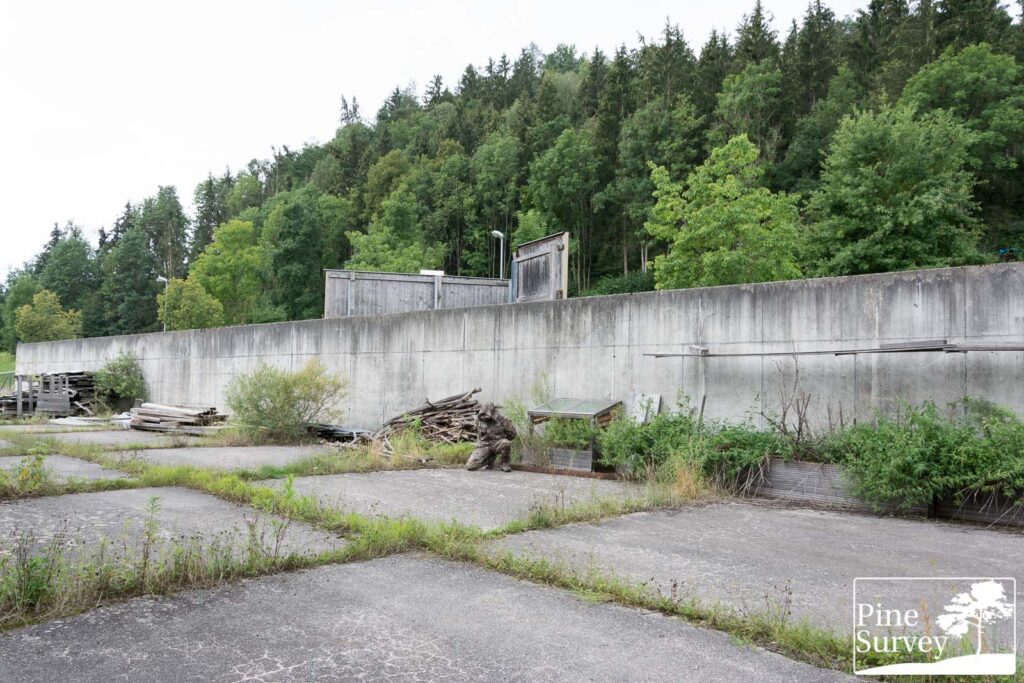
Wide angle lens – kneeling position – 5-10m distance 
Wide angle lens – prone position – 5-10m distance 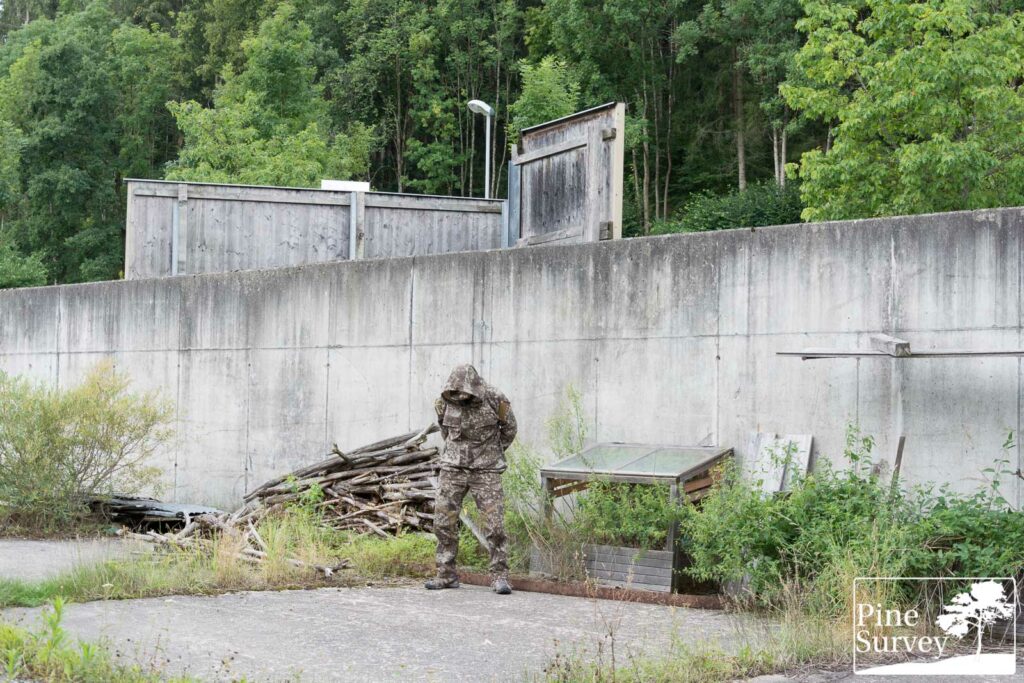
35mm focal length – Standing position – 5-10m distance 
35mm focal length – kneeling position – 5-10m distance 
35mm focal length – prone position – 5-10m distance
Observations – Location 2
Just like Location one, this spot demonstrates the issue of solid color environments in urban scenarios. However, in this particular spot the problem is not as apparent as with the bright wall, which was mentioned previously.
Looking at the wide angle pictures, and starting with the standing position, the choice of colors for PenCott Metropolis immediately comes to mind. While the Light gray and Ivory color match the immediate concrete and tarmac surroundings, the brown gray macro elements of the pattern match the wood debris.
Obviously you have no sci-fi stealth effect in this setting, but enough blending and disruption to slow down a possible target acquisition.
However, this whole picture changes, when kneeling down. At that moment the colors provide an excellent blending effect that results in a very good concealment. And while the macro elements might not be as apparent as with Phantomleaf WASP II Z4 for example, it is still working enough to complement the blending effect with disruption.
When lying down, the same effect comes into play which was already mentioned. The Metropolis pattern becomes brighter in the open, while the organic fractals create a hard to identify object, which is still visible.
The pictures using 35mm focal length show the pattern at very close range, which has to be considered close quarters – where camouflage is a side note. However all the micro, midi and macro elements are at play and blend into the background, blurring the edges of the silhouette. Interestingly enough the brown stretch elements on the pants interrupt the legs even more.
When kneeling down, the shoulder area again blurs into the background, while the midi and macro elements disrupt.
The prone position needs no further explanation, as this aspect has been stressed enough.
Alpine and Rocky Environment
Just like Phantomleaf WASP II Z4, PenCott Metropolis was not designed as an alpine or mountain camouflage pattern. However, since the used colors can also be found in rocky environments – which should not be a huge surprise – it can also be used in said environments.
Location 3
This location is well known from my “alpine camouflage” reviews. It is a typical rock formation you would find in mountainous or alpine regions, with the occasional vegetation.
The distance to the camera is 15-20m, the weather was sunny, with the sun setting in the back, blinding from the side – as a result some of the pictures are not as good as in previous tests.

Wide angle lens – Standing position – 15-20m distance 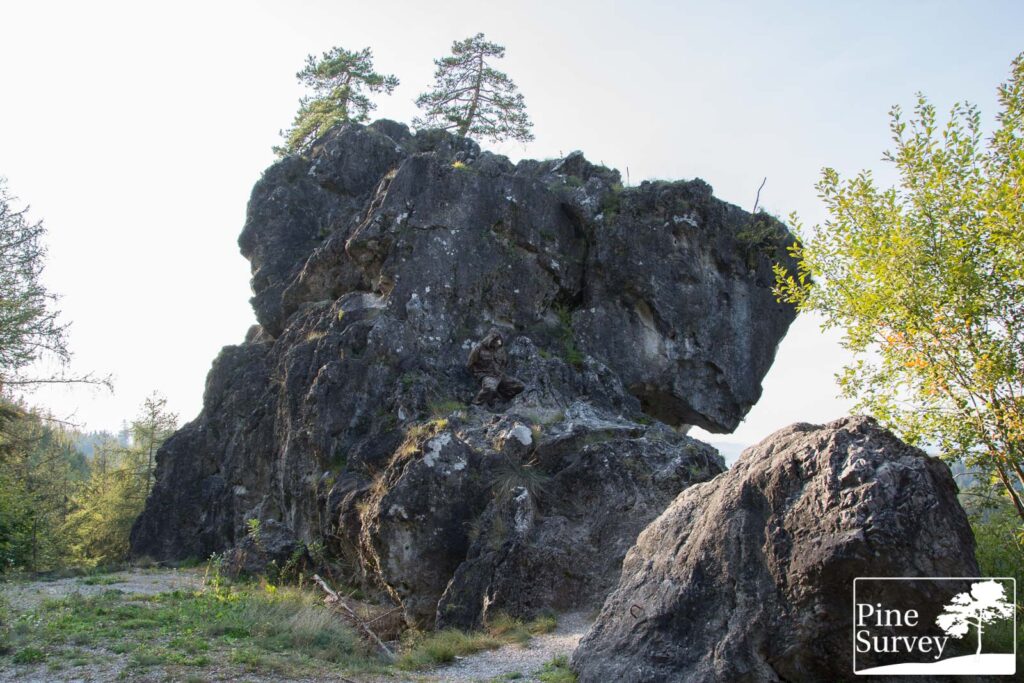
Wide angle lens – kneeling position – 15-20m distance 
Wide angle lens – leaning position – 15-20m distance 
35mm focal length – Standing position – 15-20m distance 
35mm focal length – kneeling position – 15-20m distance 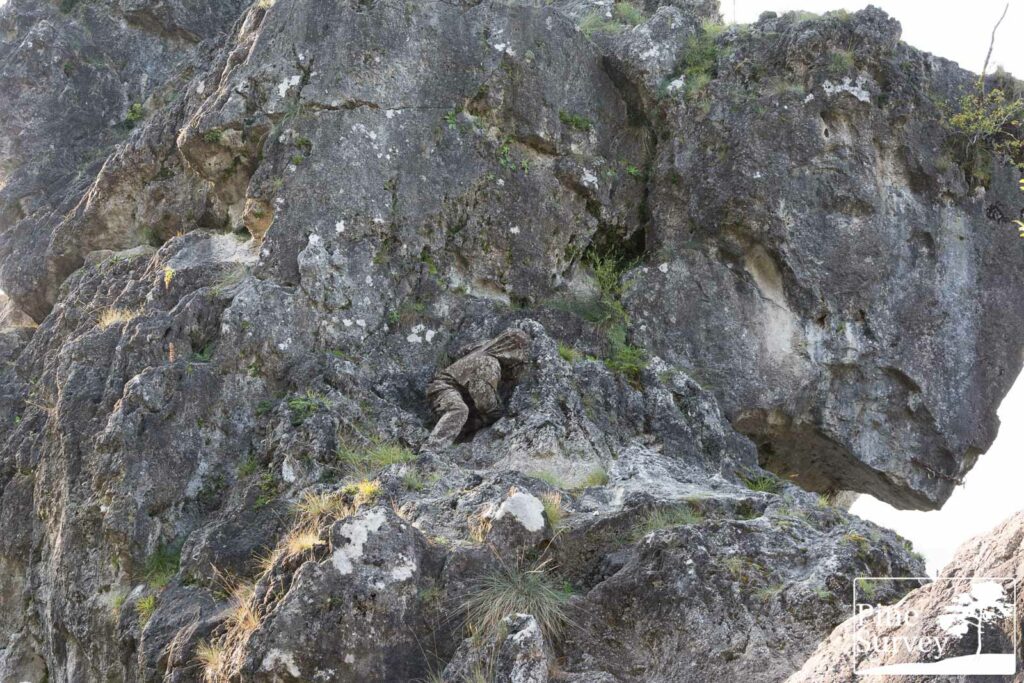
35mm focal length – leaning position – 15-20m distance
Observations – Location 3
In this particular setting, the use of more browns in the production pattern of PenCott Metropolis is not as ideal as in previous locations. Starting with the wide angle pictures and the standing position, one can see that the blending effect of the colors is not as strong. While the various micro, midi and macro fractals are still working effectively because of their organic look, the colors are slightly off.
The situation does improve while kneeling/squatting down. As one can see, the human silhouette gets harder to pinpoint, while the lighter macro elements (e.g. on the leg), break up more of the person.
Leaning towards the rock makes the silhouette blend in better, as the organic elements interact with the ruck surface and the brighter ivory and light gray colors fit better to the rock.
The pictures using 35mm focal length give a much better impression. Not only is the overall light more neutral, the PenCott Metropolis pattern is also better documented. The picture of the standing position depicts the various micro, midi and macro elements and clearly shows how the organic fractals fit into this setting. As the light changed during the shooting, the colors of Metropolis also blended in better with the rock surface.
When squatting down, the brighter elements break up the silhouette across the torso as well as the upper leg. The same can be observed in the leaning position
Location 4
Last but not least – location number 4 is a gravel pit. You might know this one from previous articles as well. I will post two different spots in the same pit without the prone position.
The weather was sunny, with clouds coming and going. The usual spots were in the shade however.
Distance to camera: 10m.

Wide angle lens – Standing position – 10-15m distance 
Wide angle lens – kneeling position – 10-15m distance 
35mm focal length – Standing position – 10-15m distance 
35mm focal length – kneeling position – 10-15m distance 
Wide angle lens – Standing position – 10-15m distance 
Wide angle lens – kneeling position – 10-15m distance 
35mm focal length – standing position – 10-15m distance 
35mm focal length – kneeling position – 10-15m distance
Observations – Location 4
The gravel pit always serves as a reminder that not all stone structures look alike. In this case the rocks are much whiter and feature different structures. Since I would only repeat myself at this point, I will let the pictures speak for themselves.
Something worth noting, however, is the versatility of PenCott Metropolis. Especially in the areas where vegetation meets rock, the pattern finds a balance between both environments and perfectly blends in. This is the advantage of the stronger Tan/Brown tones in the pattern.
Addendum
I will add two more pictures: one made from a drone, to give you a better perspective on how PenCott Metropolis works in the rocks, and another one, where you can witness its effectiveness in a winter/spring environment in the forest, with some snow left and lots of dead/brown vegetation.
Conclusion
The final production run of PenCott Metropolis took longer than expected, but it was surely worth the wait. Just like the other variants of the PenCott family, Metropolis knows to convince with its versatility, organic look and carefully selected colors.
While it might not be as strong in contrast as Phantomleaf WASP II Z4, when it comes to its macro elements, it still has a decent disruptive effect that perfectly interacts with blending in.
PenCott Metropolis is an effective urban camouflage pattern. This field test showed that it is very adaptable when it comes to both urban and mountainous environments. As a result this is a clear recommendation from my side for those in need of such a pattern.
With that being said, it is worth pointing out that right now Perunika.org is taking preorders for uniforms, jackets, headwear etc. The Slovenian company managed to buy the remaining stock of Metropolis fabric! So it will take some time until new fabric is being printed and delivered to other companies, which produce apparel. Keep that in mind, when planning to get this urban pattern. For more info contact: info@perunika.org!
As always I hope I was able to give you a decent overview of this camouflage pattern.
Many thanks for the continuing support from all sides!
Take care!
To support – click & tip!

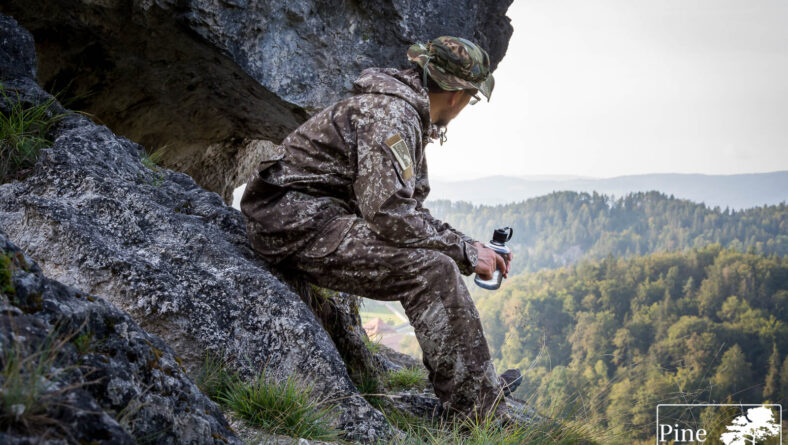




No Comment
You can post first response comment.